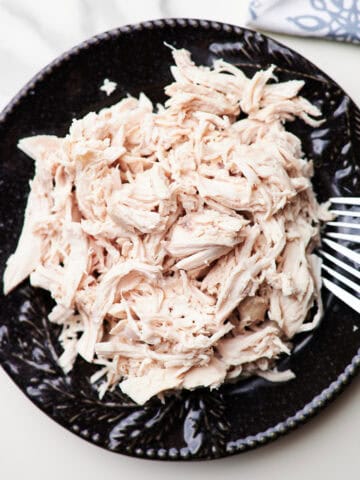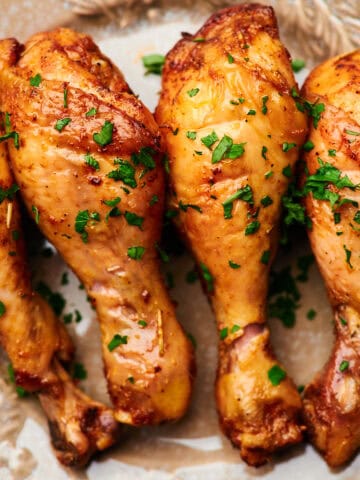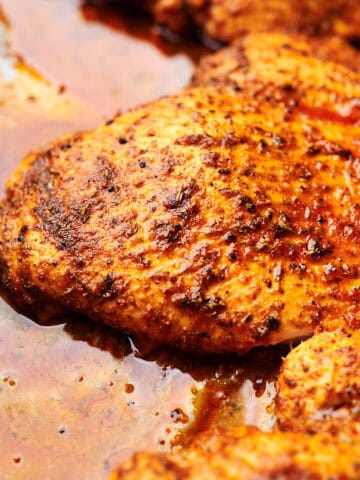Do you also want to know how many ounces 100 grams is? Here's what you need to know. I have also included a conversion table below!

When converting weights and measures, it's important to know what units you are working with. Here, in this article we will discuss how to convert 100 grams to ounces. We hope this article makes this common conversion (from kg to lbs) much easier and lets you take control of your own weight in daily life.
While it might sound strange to write about how many grams are in an ounce (and other grams to oz conversions), it is quite important if you are using this system of measures often as grams becomes a more and more prevalent form of measurement in both cooking and food nutrition. For those of You who do not love to calculate, we will serve you with an easy to use grams-to-ounce calculator and contribute a bit of the history of the gram and the ounce.
This was inspired by my How many TABLESPOONS IN ¼ CUP article. You can also put these conversions into practice in this Easy Turkish Baklava Recipe, Easy 3 Ingredient Ice Cream, or the superb The Easiest Cinnamon Apple Pie.
Jump to:
100 Grams to Ounces
Grams to Ounces Conversion Tool
Weight Converter
Understanding the Conversion Factor
To convert grams into ounces we will have to come up with a conversion ratio. One ounce is approximately 28.35 grams, in the avoirdupois system of weight commonly used in the United States. So we use that as our reference throughout.
If you're following a recipe that lists metric measures, you may need to know how to convert 100 grams into ounces. 100 grams is around 3.5 oz but, there is more to it when you are converting weights.
Applying the Conversion Formula
So, armed with the conversion factor, let's use it to convert 100 grams to ounces. The formula is simple: divide the weight in grams by the conversion factor. In this scenario, the formula would look like this:
100 grams ÷ 28.35 = 3.527 ounces (approximately)
Here are those 2 quantities that I see in most of the recipes of the countries from metric system who share their recipes in grams.
Or that is, every country with the exception of the United States, Liberia and Myanmar. Unsure how many recipes from Liberia we've seen so far. For a full list of gram to ounce conversions which are used more and more often for recipes or on global nutrition labels and to search for a specific type of food, please see our food database.
That being said.
- 100 grams is 3.5274 ounces
- 200 grams is 7.05479 ounces
what is an ounce?
In the United States and a few other countries, the most common use of OZ is to describe the weight of olive oil. It is widely used in kitchen to weigh the weight of food, and also act as a pharmacy scale to weigh medicine, as well as a tea scale, etc.
In avoirdupois, one ounce is equivalent to approximately 28.35 grams. But it's also important to understand that there are various types of ounces depending on what you are measuring:
- Avoirdupois Ounce - This is the standard ounce in the US, and is an avoirdupois measure which means that its measurement is based on a pound unit and it uses the 16-base measurement system unlike the troy ounce that uses a 12-base measurement system1 pound = 16 oz = 0. Avoirdupois Ounce 'Avoirdupois Ounce' is.. Read more › We assume you are converting between ounce and kilogram.
- Troy Ounce: More commonly used to measure precious metals, such as gold, silver and platinum. Yes one troy ounce is 31.1 grams.
- Fluid Ounce: The liquid ounce measures the volume of liquids. It is a measure of weight as well. One fluid ounce in the United States is roughly 29.57 milliliters.
what is a gram?
The gram (symbol: "g") is a unit of mass in the metric system. In many countries and wherever the international standard is followed, it is used as the small-object measure, especially for small amounts of foodstuffs and some liquids, and other materials.
The gram is one of the systems of measurements used in a metric system, which is a system based on the powers of 10. One gram is one thousandth of a kilogram (1 kg = 1000 g). It is a smaller unit than a kilogram, and a larger unit than a milligram.
Grams are widely used everywhere except in countries where the metric system is not, such as the United States. it\'s a great measuring tool which is easy to read even with the weight on it.
Just to put that in perspective, here are a few common weights, given in grams:
- Original paperclips weigh in at around 1 gram per piece.
- The average weight of one grape is about 5 grams.
- An average chocolate bar may contain 100 grams.
- A bottle or can of soda typically contains 355 grams of soda.
The gram is an easy and convenient unit of measurement that is perfect for all the applications that require you to measure anything from food, ingredients, chemicals to postage all can be easily measured.
Gram to ounce conversion chart
This is important because baking recipes that are developed outside of the United States will sometimes call for precise ingredient quantities in grams rather than the more familiar ounces. Conversion of a few standard recipe measurements from grams to ounces.
There is a conversion factor to get grams to ounces:
1 ounce = 28.35 grams
Divide the weight in grams by 28.35 to convert to ounces. The answer you get is the weight in ounces.
Take a weight, for instance - you've got something weighing 100 grams, for instance:
100 grams / 28.35 = 3.5274 ounces (ish!)
Thus 100 grams weigh 3.527 ounces.
And also remember that this conversion factor is the one for the avoirdupois ounce, which is the most commonly used ounce in the United States. Here is how that calculation would look for gold or silver, but be aware you will have to use the conversion factor for troy ounces (it's 31.1 grams per troy ounce).
| Grams | Ounces |
|---|---|
| 5 | 0.17 |
| 10 | 0.35 |
| 15 | 0.52 |
| 20 | 0.70 |
| 25 | 0.88 |
| 30 | 1.05 |
| 35 | 1.23 |
| 40 | 1.41 |
| 45 | 1.58 |
| 50 | 1.76 |
Bottom line. 100 grams = 3.5 ounces
Practical Examples:
Here are a few practical samples to help you understand how you can use this conversion:
- Cooking Measurements: Let's say you stumble upon a recipe that calls for 100 grams of flour. Once you've converted this to ounces, you'll determine you'll require roughly 3.527 ounces of flour to the recipe.
- Package Labels When you are shopping for food or other products, you may see grams on package labels. Understanding how many grams are in an ounce allows you to comprehend the weight in a familiar unit. So, for a 100-gram package, you can ballpark it around 3.527 ounces.
- Travel Abroad: If you are going overseas to a country where the metric system is the way to go, then knowing how to convert grams to ounces can help you understand weight in a way that makes more sense instead. For example, things can be given in grams, and you can convert them to its equivalent in ounces (a number more familiar to you) to have an idea on the weight of the item.
Recapitulation
Knowing how to convert 100 grams to ounces is a skill you`ll use often when dealing with weight measurements. Once you know the conversion factor, It's easy to understand how to convert between grams and ounces as well as use the conversion formula. 1.3 Examples Examples of such knowledge can be found in the domain of cooking, food packaging and international travel. Hyperquotients Based on these conversion formulas are exactly the amount you need to easily transition between the two different ways of measuring weight, as grammar that nobody knows or is taught.
Trivia
Saffron is one of the most costly spices by weight and is because of the manual labor in harvesting its flowers. The price of saffron is as follows.. Read below:
- Factors Affecting the Cost:
- Manual Harvesting: Saffron consists of the stigmas and styles of the saffron crocus. These threads are removed by workers who pinch the threads off the flowers - it's a very slow and inefficient process.
- Low Yield: Each flower has an average of only three stigmas, and it requires many flowers to create a quantity of saffron. Depending on the variety, it takes about 75,000 saffron flowers to yield one pound (450 grams of saffron.
- Quality Grading:
- Factors such as color, aroma, flavor, freshness and lack of impurities are commonly used to determine the quality of saffron. They also see the higher-grade red saffron which they call "Coupe" or "Superior" as superior quality for which a premium is paid.
- Saffron of other grades, however, such as "Pushal" and "Sargol" may be less expensive but in terms of quality pay less compete to "Super Negin".
- Price Range:
- Thanks Terence Saffron is also highly variable in price depending on the quality, location of production and market demand.
- Good saffron can be priced anywhere between $500 and $5,000 by the pound (0.45 to 2.27 kilograms) on average. That's about $1 to $15 or more per gram.
- Keep in mind that the prices are liable to change over time due to conditions like weather events, political stability in the production regions, and global demand.
Recipes using these conversions and measurements
- Easy And Delicious Homemade Strawberry Cake Filling
- Steak Egg and Cheese Bagel Recipe
- 15-Minute Homemade French Bread Pizza In The Air Fryer
- Ranch Pasta Salad
- Cottage Cheese Ranch Dressing (High Protein Low Calorie Ranch)
- 15 Minute Garlic Parmesan Sauce
- The BEST Homemade Anchovy Pizza Recipe
- Homemade Hamburger Helper Recipe
- Easy Goat Cheese Crostini Appetizer With Honey





Dina Miller says
I just screen shot your chart! You made it so easy for us! We weigh out things at home, but when we travel and bake we are always stumped! Now we won’t be!
Sisley says
A really useful conversion. Thank you
Dannii says
Really helpful for all those baking conversions.
Shadi Hasanzadenemati says
Thank you so much for this article. I was looking for that.
Toni says
This is really helpful! Thank you so much for sharing this!
stephanie waterson says
how many MLS are in 10 liquid onces